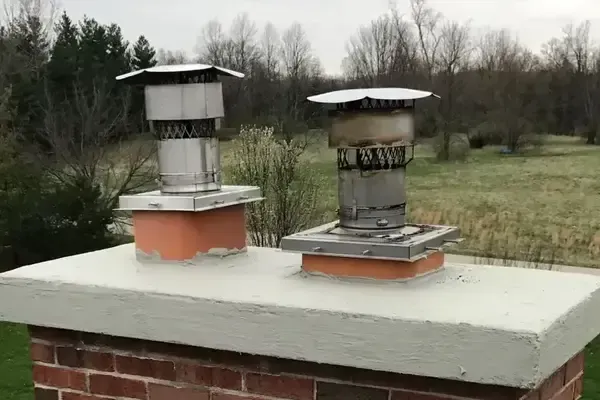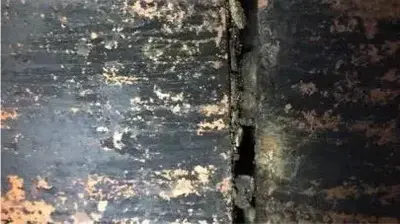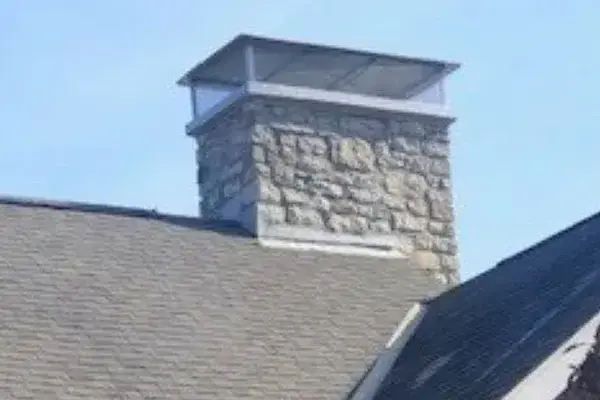
Chimney 101: Cap

If you take a drive around a residential area, you will see many chimneys that do not have any type of cap on them. Homeowners do not realize how important it is to ensure you have a chimney cap. A cap that costs less than $300 can save you thousands of dollars in chimney repairs. Many of these caps come with a lifetime warranty.
A chimney cap refers to the apparatus that sits on top of your chimney’s flue. This cover’s main purpose is to stop water, animals, and debris from getting into your chimney, as well as help prevent downdrafts. Caps will also prevent sparks or embers from escaping your flue and landing on your roof or other parts of your property.
Water is the biggest enemy of a brick chimney. With no cap in place, water can enter directly down the flue liner or even around the flue liner on top of the chimney crown. Once water is inside the flue liner, it can run down the walls and penetrate mortar joints, freezing and pushing the joints out of place. It can also find its way down into the smoke chamber, rusting the metal throat damper or wreak havoc on often unprotected masonry there. As water destroys your masonry, it will eventually find its way into your home, causing a leak in or around your chimney.

This chimney’s flue has missing mortar joints which fails NFPA 211 14.9
Animals also will find a way into an uncapped chimney. A neighbor of mine kept his chimney uncapped for a few seasons. The final straw was when he had a family of birds take up residence on his smoke shelf. Every time the wind blew, a trio of very loud chicks chirped and the echo from the chimney made it difficult to have a phone conversation. When he finally agreed to have us install a cap, he cleaned out his ash pit and lost count at 13 bird skeletons. Sadly, during an inspection, we found some damage related to the water, but we patched him up with a stainless steel chimney liner and two new stainless steel caps with a lifetime warranty.
In addition to standard chimney caps, there are several different specialty caps that are available.
Damper Cap or Lock-Top Cap
These special types of caps are great for masonry chimneys that experience downdrafts. A cable runs down the flue and into the fireplace. Pulling the chain opens and closes the damper. These caps are sealed tight when closed.

This chimney cap has the ability to open and close when a cable is pulled from inside the house.
Some caps are designed to help produce and updraft for houses that have a pressure imbalance that causes downdrafts to occur more often. There is also a type of cap that covers multiple flues, sometimes referred to as a “Big Top Cap”.

An example of a simple Big Top Cap. These caps are sometimes crafted by artisans and can be made of various metals and cost thousands of dollars.
Benefits Of A Chimney Cap
Chimney caps cover a chimney’s flue and will save you money over time
Caps prevent rain and debris from entering your flue
A chimney cap stops downdrafts
A cap will prevent animals from getting into your chimney
A chimney cap will prevent embers from escaping your chimney
There are many different types of chimney caps

